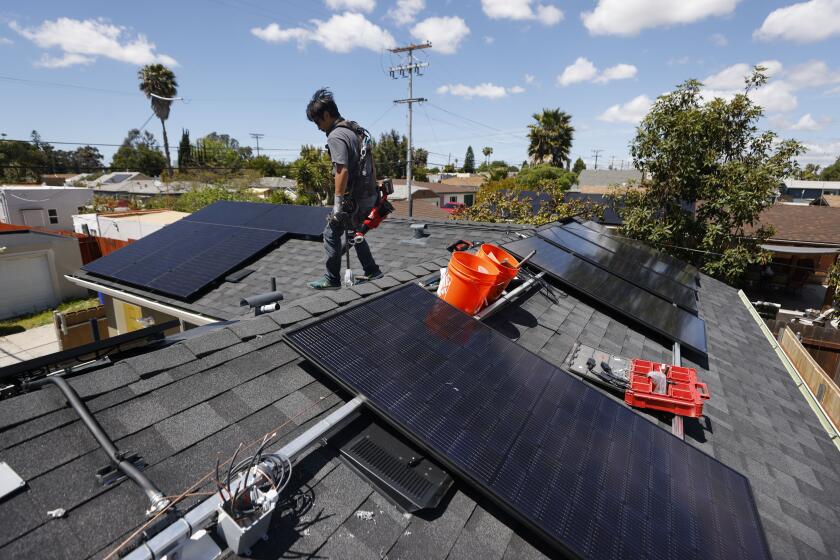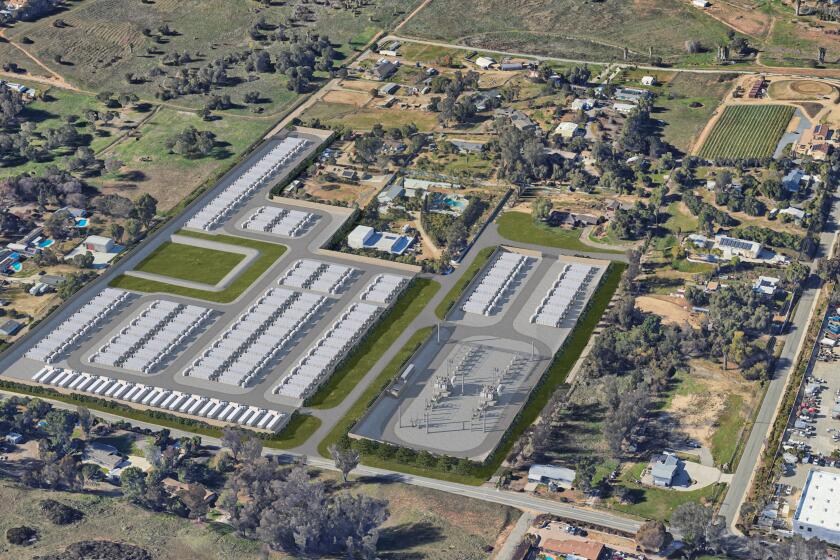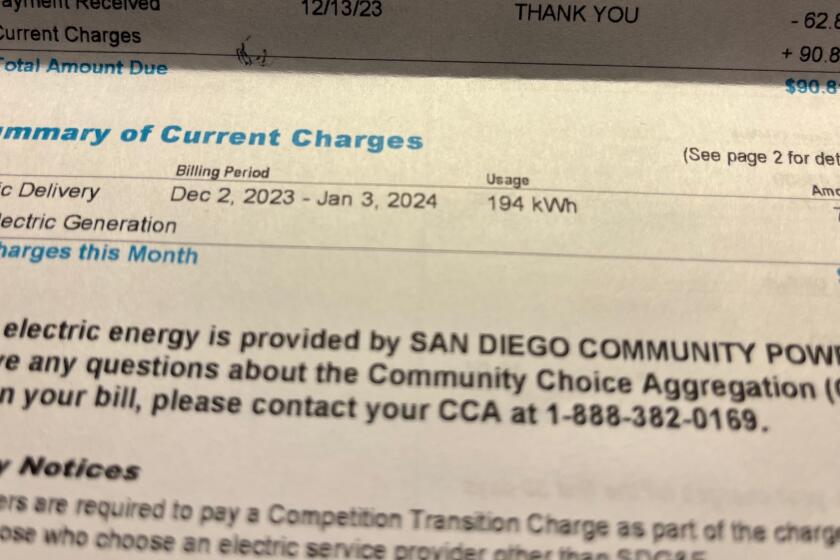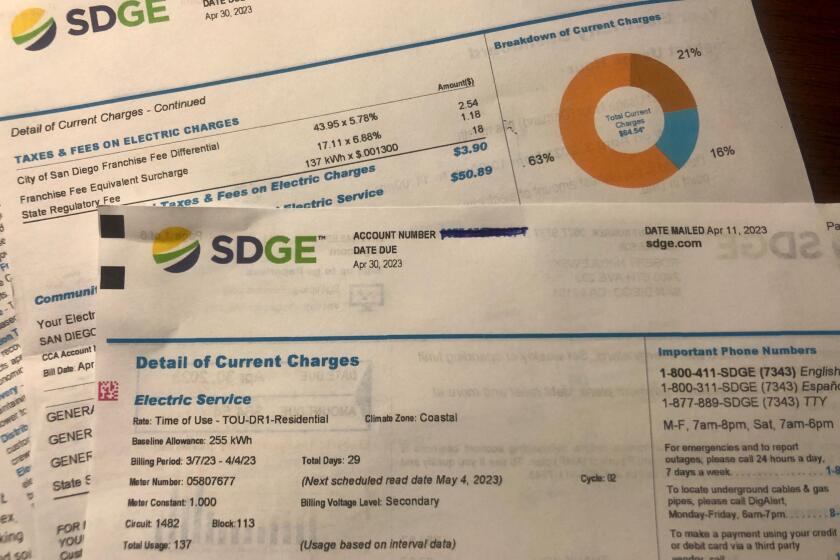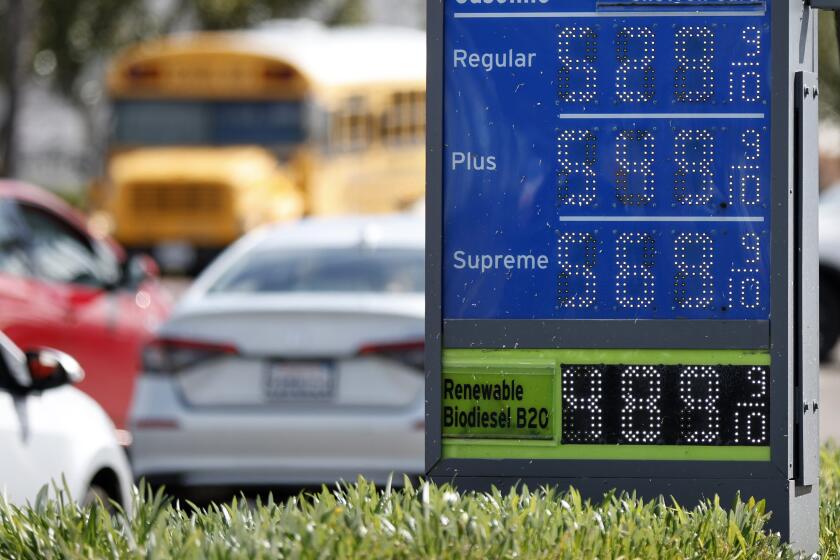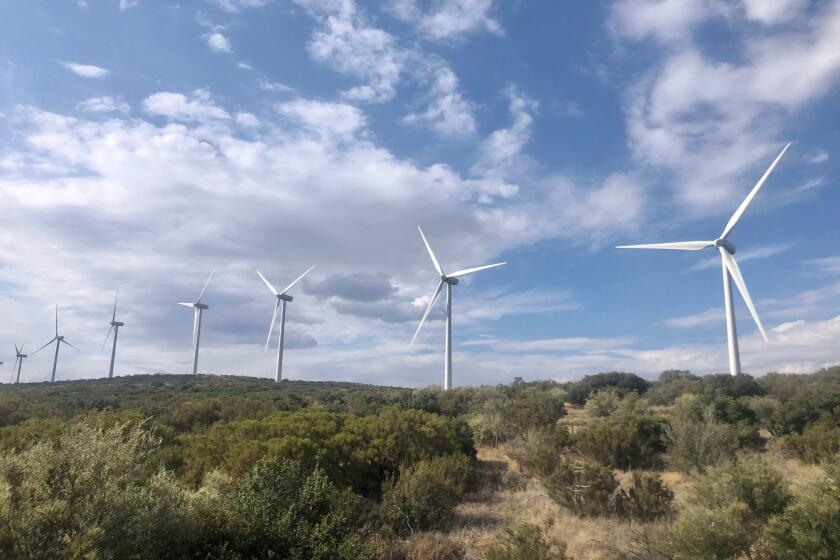‘The droughts are getting more difficult,’ says White House climate czar during her visit to San Diego
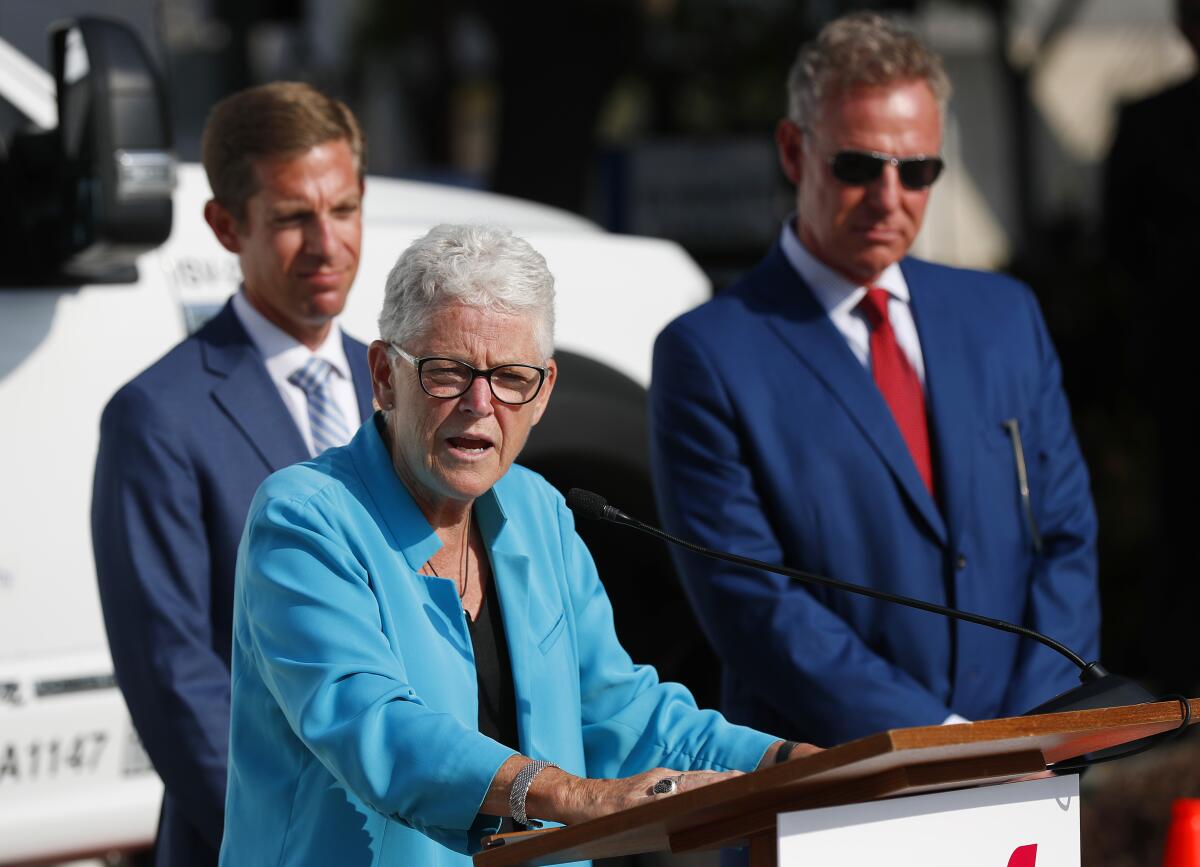
Visit comes as extreme drought conditions persist and the Dixie Fire burns Northern California
With states in the West parched from extreme drought conditions and the Dixie fire still scorching Northern California, White House National Climate Adviser Gina McCarthy on Tuesday toured San Diego Gas & Electric’s Emergency Operations Center, where the utility monitors severe weather events and tracks wildfires.
“The droughts are getting more difficult,” McCarthy said after the visit in which she was accompanied by Rep. Scott Peters, D-San Diego, and Rep. Mike Levin, D-San Juan Capistrano. “We are seeing fuels in our forests that need to be cleaned out. We are seeing responses now that depend on technologies like hardening of our lines and our transmission areas so we can make sure we are doing physically what we can do to protect them.”
After the 2020 election, then President-elect Joe Biden selected McCarthy, the former administrator at the U.S. Environmental Protection Agency during the Obama administration, to lead the newly created White House Office of Domestic Climate Policy.
For a solid month, firefighters in Northern California have battled the Dixie fire that has blistered 944 square miles across three counties, destroying nearly 1,200 buildings and leveled a good portion of the town of Greenville.
Water levels at the largest reservoir on the Colorado River — Lake Mead — have fallen to record lows. On Monday, federal officials declared the first-ever water shortage from the river that serves 40 million people, triggering cuts in water supply to some Arizona farmers.
Arizona will lose about 18 percent of its share from the Colorado next year and Nevada will lose about 7 percent of its share. For now, California is spared from immediate cuts because it has more senior water rights than Arizona and Nevada.
Two weeks ago, California had to shut down one of its largest hydroelectric plants because there’s not enough water to power it. The six-turbine Edward Hyatt Power Plant was taken offline for the first time after the water level in the Oroville Dam reservoir that feeds it sank to a historic low of less than 642 feet above mean sea level.
The loss of hydropower will add more strain to an already stressed state grid.
“You are going to see significant investment in the bipartisan infrastructure deal on these very issues,” McCarthy said, referring to the $1 trillion legislation the U.S. Senate passed earlier this month.
The bill includes spending on a number of energy projects:
- $7.5 billion for zero- and low-emission buses and ferries, looking to deliver thousands of electric school buses to districts across the country, according to the White House
- another $7.5 billion build a nationwide network of plug-in electric vehicle chargers, and
- $65 billion in investments to bolster the electric grid. It calls for building thousands of miles of new power lines and expanding renewable energy.
The bill’s proponents have said the bill pays for itself but the Congressional Budget Office found it would add billions to the deficit over 10 years.
The bill now goes to the House of Representatives. If approved, it then goes to Biden’s desk.
“We cannot get out this cheap,” McCarthy said, “because the costs of doing nothing is hugely expensive. So we’re not talking about overspending, we’re talking about investments.”
Peters said the infrastructure bill includes legislation he has sponsored aimed at building out transmission lines to export lower-cost renewable energy to new markets across state lines.
“That will give the Federal Energy Regulatory Commission, FERC, backstop authority so that if after a particular amount of time these people don’t get around to making an agreement, the federal government can come in and make sure that line is permitted and we can get all these benefits,” Peters said.
Levin said the infrastructure bill includes $250 million over a five-year period for desalination legislation he reintroduced. “Now we have to make sure those other provisions — environmental best practices and a focus on drought-prone areas — are included in the bill we eventually get across the finish line,” he said.
Since 2007 when downed power lines in high winds ignited the devastating Witch, Guejito and Rice wildfires that killed 10 people and destroyed more than 1,700 homes, SDG&E has spent nearly $2 billion in ratepayer funds on wildfire mitigation programs.
The utility has installed a network of 220 weather stations to monitor potential wildfires and its emergency center is considered state-of-the art.
“Using all kinds of different technologies, we can both manage the fires once they’re detected but even more importantly, detect them early on,” McCarthy said.
When asked if natural gas is part of the White House’s energy equation, McCarthy said, “The president’s plan is an all-of-the-above’ strategy and we are looking at every opportunity, of course, to get renewable energy into the marketplace as fast as we can but we are not picking and choosing winners. We are investing in every winner we can find.”
Get U-T Business in your inbox on Mondays
Get ready for your week with the week’s top business stories from San Diego and California, in your inbox Monday mornings.
You may occasionally receive promotional content from the San Diego Union-Tribune.


